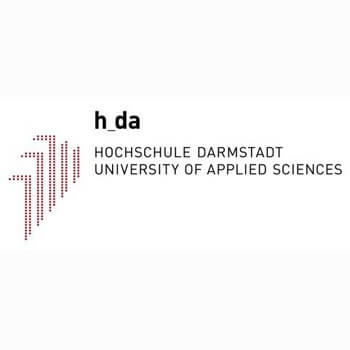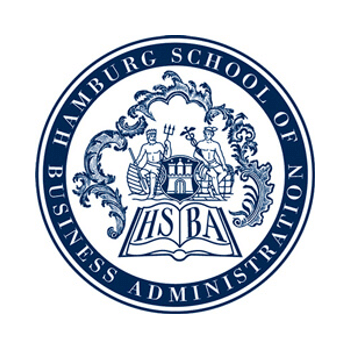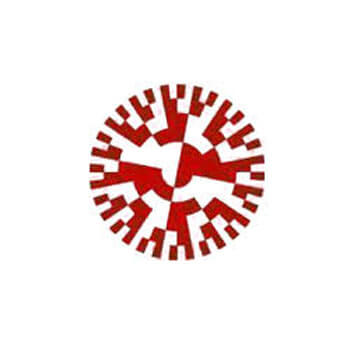University of Giessen

Founded: 1607
Address: Ludwigstrasse 23 - Hesse, Germany
Phone: +49641 9916400
Address: Ludwigstrasse 23 - Hesse, Germany
Phone: +49641 9916400
Here you find out University of Giessen complete information about fees, location, degree University of Giessen offers, number, website, and much more. University of Giessen is a leading university in Hesse - Germany.
You can also find out jobs at University of Giessen for students, teachers, and professors. We also update the database for an internship at University of Giessen for students.
Giessen University is a modern institution which can take pride in some four centuries of past achievement. With around 28000 students, the university is prepared to meet any challenges that the future may bring.
Giessen University (the “Ludoviciana” or “Ludwigs-Universität,” and since the end of the Second World War “Justus-Liebig-Universität”) is one of the older universit...ies in the German-speaking part of Europe. In the late Renaissance, students from Hesse generally had to go to the universities of Erfurt (founded 1392), Prague (1348), France or Italy to pursue their research and studies. After 1527, in the wake of the second great post-Reformation religious movement, it became possible to study closer to home in Marburg. As a result of religious and philosophical differences at Marburg, which turned Calvinist, the members of staff who remained loyal to the Lutheran faith moved in 1607 to the nearby town of Giessen, where Landgrave Ludwig V of Hessen-Darmstadt had created a new university. The rough-and-tumble of the Thirty Years War soon led, however, to a suspension of teaching at the “Ludoviciana” and re-location to Marburg (1624/1625). In 1650, the Peace of Westphalia rehabilitated Giessen University as a teaching institution.
In the seventeenth and eightenth centuries, the Ludoviciana was a small Protestant university with the four faculties typical of the time: Theology, Jurisprudence, Medicine, and Philosophy (the latter covering the disciplines nowadays taught within the natural sciences and humanities). Some twenty professors taught several hundred students, most of them from Hesse.
The University in this period chiefly served local German concerns, with only the Law faculty maintaining links of international significance. In the eighteenth century, under the influence of the Enlightenment ideals of Halle and Göttingen as well as the Landgrave’s court, there was a valiant push to modernize, in the face of considerable economic disadvantages. One notable achievement was the creation between 1777 and 1785 of a Faculty of Political Economy, which included new, practically oriented disciplines – veterinary medicine, agricultural science, and forestry – that were to prove of groundbreaking significance, as well as technical disciplines (drawing, crafts, design), the latter being transferred south to Darmstadt in 1874.
The Ludoviciana played an important role in several of the major scientific discoveries of the nineteenth century. True to the principle of quality over quantity, it was a small handful of gifted Giessen scholars who brought to the world a series of scientific breakthroughs.
Some of these pioneers were the chemist Justus Liebig (founder of the chemical teaching laboratory and inventor of artificial fertilizers), the jurist Rudolf von Jhering, the theologians Adolf von Harnack and Hermann Gunkel, Wilhelm Conrad Röntgen (father of X-rays and winner of the first Nobel Prize for physics), and Friedrich Gottlieb Welcker, historian of Antiquity. The ‘young’ sciences, which began to emerge in full force around 1830 (see below), led to the establishment of an unusual variety of subjects at Giessen, for which the university continues to enjoy a high reputation. Giessen was on its way to becoming an institution of central importance, with the advantage of close links to Frankfurt am Main. In the repressive ‘pre-March’ period of the Age of Metternich (leading up to the failed revolution of 1848), Giessen, along with Jena, was the prototype of a politicized liberal university (typified by the scientist, writer, and dramatist Georg Büchner, who founded a ‘Society for Human Rights’ at Giessen in 1834). Bismarck’s German Empire, founded in 1871, saw Giessen becoming a modern university. By 1902, there were more than a thousand students enrolled, a very large number for the time. Giessen was no longer an educational institution catering mainly for future civil servants and clerics but also took care of the needs and requirements of the more versatile propertied class.
The First World War obliterated this lifestyle and ushered in an age of crisis. From 1919 onwards, in the face of exploding student numbers (over two-and-a-half times as many as two decades earlier), the state of Hesse did its best to support the university. The political and inflationary economic situation of the Weimar Republic hit the socially weak first and hardest (in Giessen these were the students), causing widespread radicalism. After 1931, there was a National Socialist majority in the students’ association. Most of the teaching staff were pre-war revanchists, or abstained from political involvement altogether.
The behaviour of the Ludoviciana during the age of National Socialism was average for the times – meaning: depressing and shameful. Twelve percent of the professors were relieved of their duties – chiefly in the philosophy faculty. The Nazi party brooked no opposition. Both those already in the party and new entrants were, as elsewhere, partly resistant to following new policies and partly active in implementing them. Forced treatments such as sterilization were conducted in the hospitals and some ‘fashionable’ subject areas (such as ‘race’ theory and eugenics) were promoted. Nonetheless, distrust of those in power persisted, as was revealed in the revision of the university regulations, in which the influence of professors was curtailed and that of the teachers and students increased.
The question of the university’s continued existence was, however, soon to be resolved. A sharp drop in student numbers and a radical shift in subject allocation (in 1939, some sixty percent of students were in the medical faculty) prompted fears for the worst – even before the Allied bombing raids on the 6th and 11th of December 1944, which almost completely destroyed the inner city, including the university buildings.
In 1945/46, the university led an uneasy existence, neither alive nor dead, in a destroyed and starving country. The newly founded state of Hesse regarded the institution as being competitive only in subjects not taught elsewhere. Justus Liebig University took up operations again in 1946, with agriculture, veterinary medicine, the most essential natural sciences, and (from 1950 onwards) human medicine. Only in 1957 was the University’s charter restored by the American occupation, and it was also at this time that an extensive construction program for new buildings was launched. The economic slowdown of 1973/74 ended a phase of unprecedented growth which saw a tenfold increase in the teaching staff and a twenty-fold increase in student numbers.
The university, which was now defined in terms of its standing within the German federal university system, grew to become the second-largest in Hesse, in accordance with the new doctrine of university access for all social classes. In 1970, national legislation transformed the country’s institutions of higher education into ‘group universities’, whose internal structure (no longer governed ‘from the top down’ but with democratic representation) was devised to act in accordance with the principles enshrined in the Basic Law and as a counterbalance to the ‘progressive’ policies of the state.
You can also find out jobs at University of Giessen for students, teachers, and professors. We also update the database for an internship at University of Giessen for students.
Giessen University is a modern institution which can take pride in some four centuries of past achievement. With around 28000 students, the university is prepared to meet any challenges that the future may bring.
Giessen University (the “Ludoviciana” or “Ludwigs-Universität,” and since the end of the Second World War “Justus-Liebig-Universität”) is one of the older universit...ies in the German-speaking part of Europe. In the late Renaissance, students from Hesse generally had to go to the universities of Erfurt (founded 1392), Prague (1348), France or Italy to pursue their research and studies. After 1527, in the wake of the second great post-Reformation religious movement, it became possible to study closer to home in Marburg. As a result of religious and philosophical differences at Marburg, which turned Calvinist, the members of staff who remained loyal to the Lutheran faith moved in 1607 to the nearby town of Giessen, where Landgrave Ludwig V of Hessen-Darmstadt had created a new university. The rough-and-tumble of the Thirty Years War soon led, however, to a suspension of teaching at the “Ludoviciana” and re-location to Marburg (1624/1625). In 1650, the Peace of Westphalia rehabilitated Giessen University as a teaching institution.
In the seventeenth and eightenth centuries, the Ludoviciana was a small Protestant university with the four faculties typical of the time: Theology, Jurisprudence, Medicine, and Philosophy (the latter covering the disciplines nowadays taught within the natural sciences and humanities). Some twenty professors taught several hundred students, most of them from Hesse.
The University in this period chiefly served local German concerns, with only the Law faculty maintaining links of international significance. In the eighteenth century, under the influence of the Enlightenment ideals of Halle and Göttingen as well as the Landgrave’s court, there was a valiant push to modernize, in the face of considerable economic disadvantages. One notable achievement was the creation between 1777 and 1785 of a Faculty of Political Economy, which included new, practically oriented disciplines – veterinary medicine, agricultural science, and forestry – that were to prove of groundbreaking significance, as well as technical disciplines (drawing, crafts, design), the latter being transferred south to Darmstadt in 1874.
The Ludoviciana played an important role in several of the major scientific discoveries of the nineteenth century. True to the principle of quality over quantity, it was a small handful of gifted Giessen scholars who brought to the world a series of scientific breakthroughs.
Some of these pioneers were the chemist Justus Liebig (founder of the chemical teaching laboratory and inventor of artificial fertilizers), the jurist Rudolf von Jhering, the theologians Adolf von Harnack and Hermann Gunkel, Wilhelm Conrad Röntgen (father of X-rays and winner of the first Nobel Prize for physics), and Friedrich Gottlieb Welcker, historian of Antiquity. The ‘young’ sciences, which began to emerge in full force around 1830 (see below), led to the establishment of an unusual variety of subjects at Giessen, for which the university continues to enjoy a high reputation. Giessen was on its way to becoming an institution of central importance, with the advantage of close links to Frankfurt am Main. In the repressive ‘pre-March’ period of the Age of Metternich (leading up to the failed revolution of 1848), Giessen, along with Jena, was the prototype of a politicized liberal university (typified by the scientist, writer, and dramatist Georg Büchner, who founded a ‘Society for Human Rights’ at Giessen in 1834). Bismarck’s German Empire, founded in 1871, saw Giessen becoming a modern university. By 1902, there were more than a thousand students enrolled, a very large number for the time. Giessen was no longer an educational institution catering mainly for future civil servants and clerics but also took care of the needs and requirements of the more versatile propertied class.
The First World War obliterated this lifestyle and ushered in an age of crisis. From 1919 onwards, in the face of exploding student numbers (over two-and-a-half times as many as two decades earlier), the state of Hesse did its best to support the university. The political and inflationary economic situation of the Weimar Republic hit the socially weak first and hardest (in Giessen these were the students), causing widespread radicalism. After 1931, there was a National Socialist majority in the students’ association. Most of the teaching staff were pre-war revanchists, or abstained from political involvement altogether.
The behaviour of the Ludoviciana during the age of National Socialism was average for the times – meaning: depressing and shameful. Twelve percent of the professors were relieved of their duties – chiefly in the philosophy faculty. The Nazi party brooked no opposition. Both those already in the party and new entrants were, as elsewhere, partly resistant to following new policies and partly active in implementing them. Forced treatments such as sterilization were conducted in the hospitals and some ‘fashionable’ subject areas (such as ‘race’ theory and eugenics) were promoted. Nonetheless, distrust of those in power persisted, as was revealed in the revision of the university regulations, in which the influence of professors was curtailed and that of the teachers and students increased.
The question of the university’s continued existence was, however, soon to be resolved. A sharp drop in student numbers and a radical shift in subject allocation (in 1939, some sixty percent of students were in the medical faculty) prompted fears for the worst – even before the Allied bombing raids on the 6th and 11th of December 1944, which almost completely destroyed the inner city, including the university buildings.
In 1945/46, the university led an uneasy existence, neither alive nor dead, in a destroyed and starving country. The newly founded state of Hesse regarded the institution as being competitive only in subjects not taught elsewhere. Justus Liebig University took up operations again in 1946, with agriculture, veterinary medicine, the most essential natural sciences, and (from 1950 onwards) human medicine. Only in 1957 was the University’s charter restored by the American occupation, and it was also at this time that an extensive construction program for new buildings was launched. The economic slowdown of 1973/74 ended a phase of unprecedented growth which saw a tenfold increase in the teaching staff and a twenty-fold increase in student numbers.
The university, which was now defined in terms of its standing within the German federal university system, grew to become the second-largest in Hesse, in accordance with the new doctrine of university access for all social classes. In 1970, national legislation transformed the country’s institutions of higher education into ‘group universities’, whose internal structure (no longer governed ‘from the top down’ but with democratic representation) was devised to act in accordance with the principles enshrined in the Basic Law and as a counterbalance to the ‘progressive’ policies of the state.
Read More
Details:
LeaderShip: President: Prof. Dr. Joybrato Mukherjee
Fees:
Time:
Phone Number: +49641 9916400
City: Hesse
Fees:
Time:
Phone Number: +49641 9916400
City: Hesse
Timing:
Country: Germany
Staff: 5500
Website: http://www.uni-giessen.de
Country: Germany
Staff: 5500
Website: http://www.uni-giessen.de
Subjects:
Jobs in University of Giessen
Currently, there is no job opening in University of Giessen as per our database.



















Leave a Reply